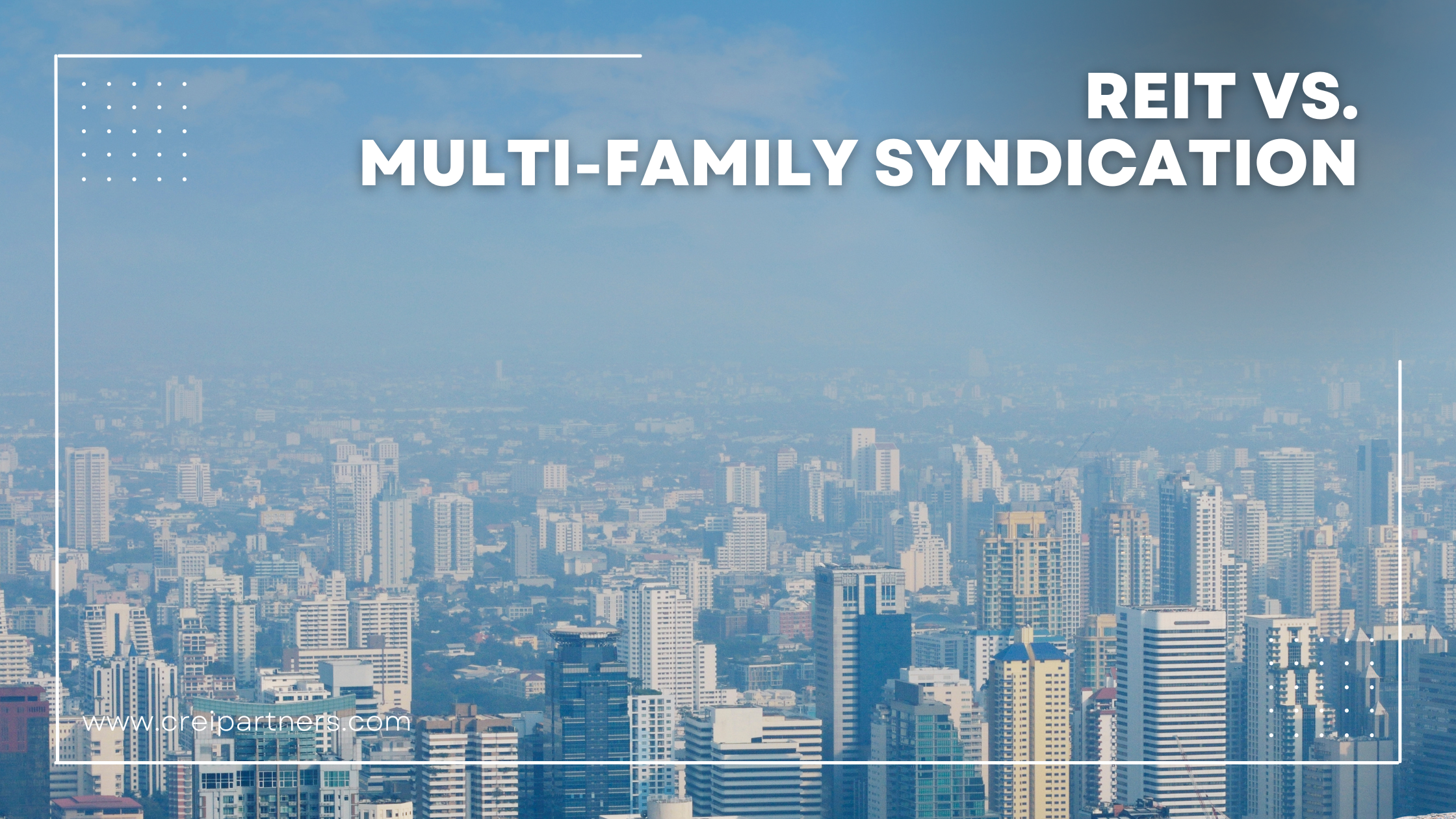What is a REIT?
A REIT or Real Estate Investment Trust is a company that owns and operates a group of income-producing properties. These may be apartment or office buildings, shopping malls, hotels, warehouses, or self-storage facilities or other property types. They may also invest in holding mortgages or loans. Investment in REITs is similar to buying stocks: shares are purchased through a brokerage account and can be liquidated at any time.What is a Multi-Family Syndication?
A multi-family syndication is an investment opportunity in which a deal sponsor, such as CREI Partners, coordinates with a group of passive investors to buy, renovate, manage, and later sell an apartment complex or other commercial income-generating asset. Investors receive passive income during the holding period for the investment, and a share of equity once the property is sold.What are the main differences between REITs and Multi-Family Syndications?
While REITs and multi-family syndications work toward a similar goal-leveraging a group of investors to capitalize on the opportunities available through commercial real estate investments-the particulars of each investment type can make one or the other a much better fit for any individual investor. There are major differences with respect to several topics:- Number of Properties Involved
- Type of Ownership
- Access to Investment Opportunities
- Investment Minimums
- Liquidity of Funds
- Tax Benefits
- Anticipated Returns


 Subscribe to our newsletter so you never miss out on new investment opportunities, podcasts, blogs, news and events.
Subscribe to our newsletter so you never miss out on new investment opportunities, podcasts, blogs, news and events.